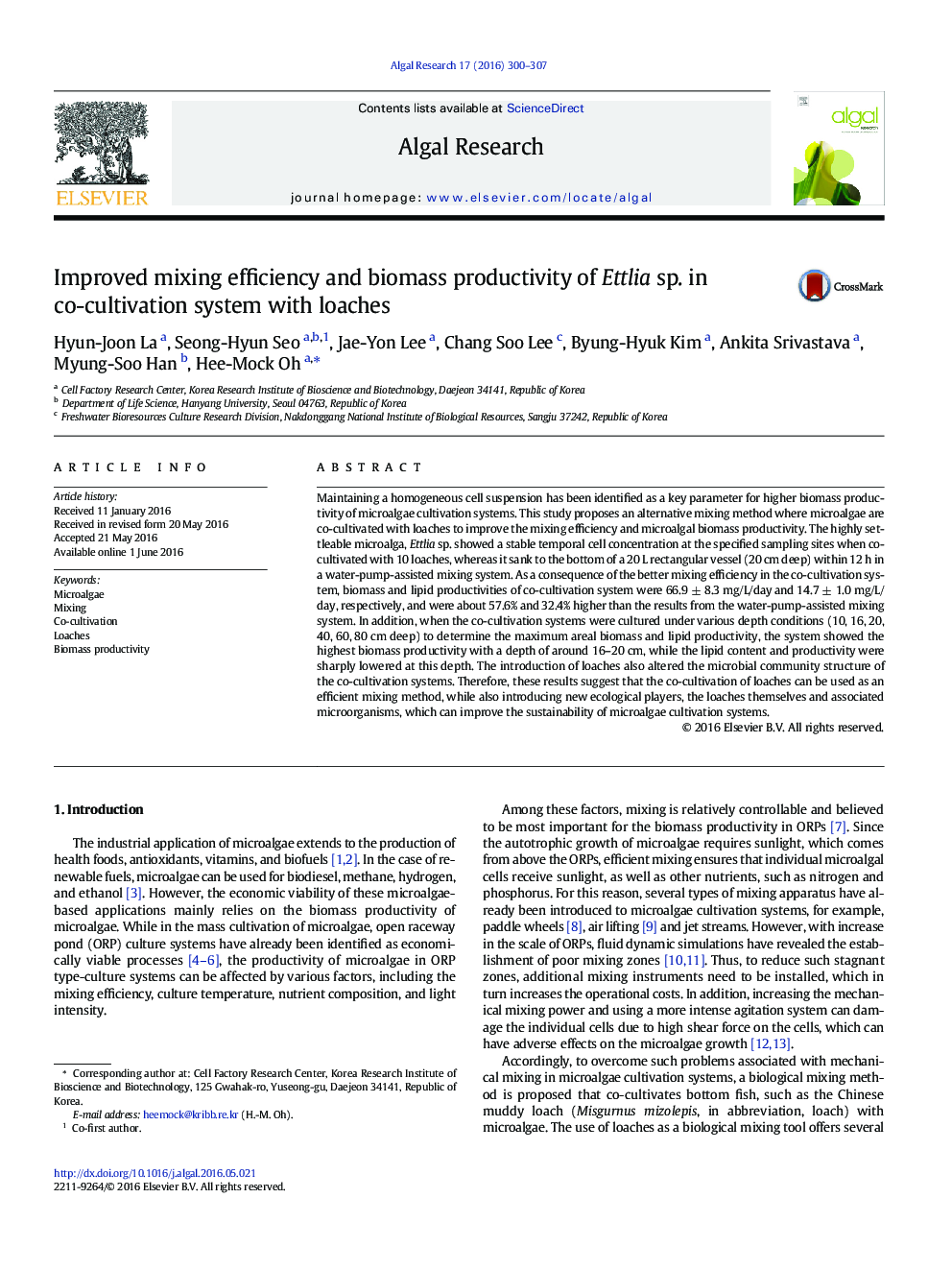| Article ID | Journal | Published Year | Pages | File Type |
|---|---|---|---|---|
| 8086875 | Algal Research | 2016 | 8 Pages |
Abstract
Maintaining a homogeneous cell suspension has been identified as a key parameter for higher biomass productivity of microalgae cultivation systems. This study proposes an alternative mixing method where microalgae are co-cultivated with loaches to improve the mixing efficiency and microalgal biomass productivity. The highly settleable microalga, Ettlia sp. showed a stable temporal cell concentration at the specified sampling sites when co-cultivated with 10 loaches, whereas it sank to the bottom of a 20 L rectangular vessel (20 cm deep) within 12 h in a water-pump-assisted mixing system. As a consequence of the better mixing efficiency in the co-cultivation system, biomass and lipid productivities of co-cultivation system were 66.9 ± 8.3 mg/L/day and 14.7 ± 1.0 mg/L/day, respectively, and were about 57.6% and 32.4% higher than the results from the water-pump-assisted mixing system. In addition, when the co-cultivation systems were cultured under various depth conditions (10, 16, 20, 40, 60, 80 cm deep) to determine the maximum areal biomass and lipid productivity, the system showed the highest biomass productivity with a depth of around 16-20 cm, while the lipid content and productivity were sharply lowered at this depth. The introduction of loaches also altered the microbial community structure of the co-cultivation systems. Therefore, these results suggest that the co-cultivation of loaches can be used as an efficient mixing method, while also introducing new ecological players, the loaches themselves and associated microorganisms, which can improve the sustainability of microalgae cultivation systems.
Related Topics
Physical Sciences and Engineering
Energy
Renewable Energy, Sustainability and the Environment
Authors
Hyun-Joon La, Seong-Hyun Seo, Jae-Yon Lee, Chang Soo Lee, Byung-Hyuk Kim, Ankita Srivastava, Myung-Soo Han, Hee-Mock Oh,
